Supporting a green strategy for the automotive industry
In contrast, global trends are increasingly focused on curbing emissions by adopting alternative energy sources and enhancing internal combustion engine tech.
 |
| Le Xuan Nghia, president, Consultancy on Development Institute |
Addressing GHG emissions in the automotive industry involves focusing on two key energy sources: batteries and hydrogel. While recent studies on hydrogel have demonstrated promising initial results, its widespread adoption as an energy source remains challenging due to significant hurdles in storage and transportation.
Hydrogel is not only difficult to store and transport, but also comes with high costs and a substantial risk of fire and explosion. For example, a 40-foot container, typically capable of holding 40 tonnes of goods, could only carry 360kg of hydrogel, requiring a large, heavy steel tank for safe transport.
Despite these obstacles, the global transportation industry continues to explore hydrogel, hoping it will emerge as a key clean fuel for the automotive sector in the future.
Electric vehicles (EVs) are currently being developed rapidly and have a significant market share in the US, Europe, and China. The advantages of these vehicles include their lightweight design, suitability for both short and long-distance travel, and the ability to set up charging stations or mobile battery-swapping stations.
However, the biggest drawback of this energy source is the environmental impact of disposing of used batteries, which can cause significant pollution. To address this, many countries are now researching technologies to produce electric vehicle batteries with a lifespan of 20-30 years. As a result, EVs are seen as a highly promising solution for reducing GHG emissions in the coming decades.
Vietnam is the world’s second-largest holder of rare earth reserves, representing around 19 per cent of global supply, comparable to Brazil and half of China’s reserves. This positions Vietnam as a key player in automotive battery production, contingent upon substantial investments in technology for the extraction and refinement of these critical elements. Therefore, Vietnam is well-positioned to capitalise on its significant market potential for EVs and motorcycles, backed by a plentiful supply of materials for manufacturing high-durability batteries.
However, both government and industry must implement comprehensive, long-term strategies to cut GHG emissions while fostering a strong machinery and manufacturing sector that supports transportation, logistics, and defence needs.
To overcome the challenges in advancing the automotive industry, it is essential to implement effective solutions that demand coordinated efforts from both the private sector and government. Firstly, in the development of the automotive industry, certain countries rely on robust banking systems capable of financing heavy industry, or the government provides loan guarantees to support enterprises in advancing the sector.
Secondly, the full liberalisation of the automotive market presents a substantial challenge for the domestic automotive sector. Although this reflects the demands of globalisation, lessons from other countries show that targeted government policies can alleviate competitive pressures.
Such measures might include subsidies related to land costs, requirements for public procurement to favour domestically produced EVs, or incentives for consumers to choose local EVs and products from domestic industries. South Korea exemplifies this approach, having successfully fostered a culture of supporting local businesses across multiple sectors, including automotive.
Thirdly, developing public transportation systems that run on low-emission fuels or electricity, as seen in Thailand and other countries that use natural gas or liquefied petroleum gas, is a viable strategy. The government can subsidise fare prices to encourage consumer adoption of these modes of transport.
Furthermore, additional supportive policies could include special consumption taxes, VAT adjustments, toll fees, and the development of infrastructure for electric vehicle charging stations. Such measures would facilitate the establishment of charging points in accessible locations at reduced costs, thereby aiding electric vehicle companies in minimising expenses related to charging infrastructure, maintenance, and battery repairs.
Deploying vehicles designed to cut GHG emissions contributes to environmental preservation by reducing carbon particulate matter and noise pollution. Nevertheless, the required investment for this sector is significant. To complement the efforts of businesses operating in a competitive landscape, strategic government support is crucial. This includes fostering the development of both the automotive and dual-use machinery industries, which will benefit both consumer markets and defence sectors.
Simultaneously, this initiative seeks to cultivate a highly skilled engineering workforce for both the industrial and defence sectors, focusing on areas critical to advancing technology and national security. For example, fields such as robotics and AI are built upon a robust mechanical technology base, requiring a cadre of proficient engineers capable of innovating, researching, and advancing technology tailored to Vietnam’s needs.
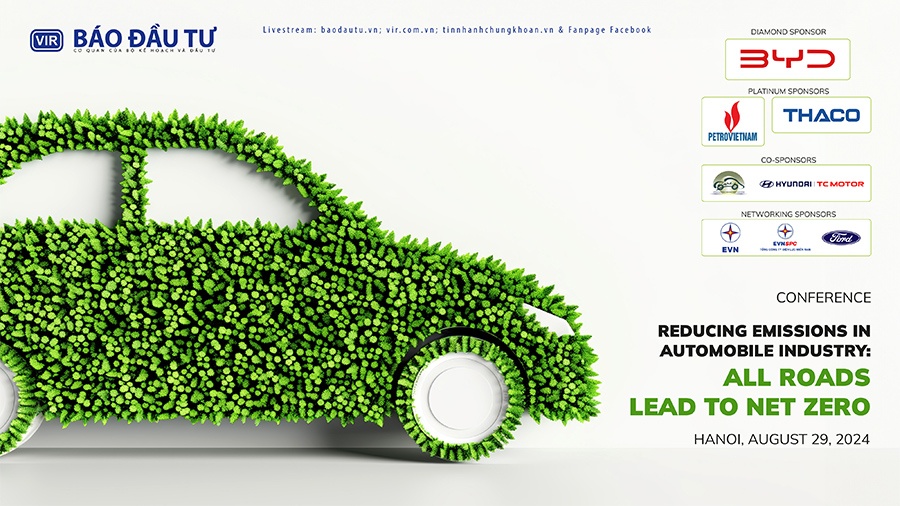 |
| Conference on reducing emissions in the automotive industry: All Roads Lead to Net Zero Reducing carbon emissions from motor vehicles, particularly within the automotive sector, has been recognised as a critical strategy in Vietnam’s pursuit of achieving net-zero emissions by 2050 - a goal to which the Vietnamese government remains firmly committed. This priority is also emphasised in the automotive industry development strategy through 2030, with a vision toward 2045, which the Ministry of Industry and Trade is in the final stages of completing. The strategy, slated for submission to the government by the end of 2024, explores various mechanisms aimed at fostering the growth of eco-friendly and energy-efficient vehicles. These initiatives are designed to phase out fossil fuel-dependent vehicles, while attracting and encouraging investor participation in this transition. To provide additional insights and recommendations, VIR will host the conference “Reducing Emissions in the Automotive Industry: All Roads Lead to Net Zero” on the morning of August 29 at VIR headquarters (47 Quan Thanh, Ba Dinh district, Hanoi). The event will be livestreamed on vir.com.vn, baodautu.vn, and tinnhanhchungkhoan.vn, and on the Facebook fanpage and YouTube. The conference will include participation from association representatives, prominent industry businesses, top experts, and officials from key regulatory bodies such as the Ministry of Planning and Investment, the Ministry of Transport, the Ministry of Finance, and the Ministry of Natural Resources and Environment. The event is supported by organisations such as BYD Automobile, Vietnam Oil and Gas Group, Truong Hai Group, Hyundai Thanh Cong Vietnam, Vietnam Electricity, Southern Power Corporation, and Ford Vietnam. |
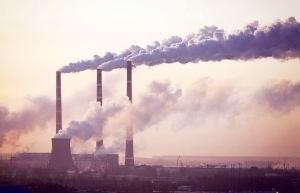 | Six Vietnamese sectors obliged to keep greenhouse gas inventories The energy, transportation, construction, industry, agriculture, and waste sector are now legally required to establish and report their greenhouse gas (GHG) inventories to relevant authorities since January 18. |
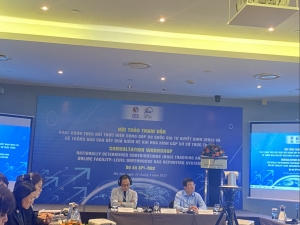 | Vietnam operates greenhouse gas reporting system online A reporting system for facilities to upload their greenhouse gas (GHG) emissions data online has been completed, and will be updated when the Ministry of Industry and Trade, the Ministry of Construction, and the Ministry of Transport issue detailed guidance for their respective areas, according to a recent consultation meeting. |
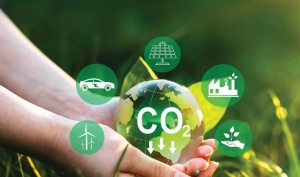 | IFC launches greenhouse gas emissions inventory and reporting manual Companies in Vietnam will find it easier to log and report their greenhouse gas (GHG) emissions thanks to the manual published by the International Finance Corporation (IFC). |
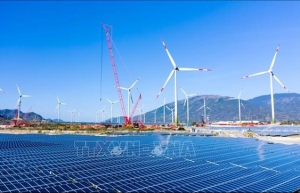 | Energy sector plans to cut greenhouse gas emissions by 17-26 per cent by 2030 Vietnam's energy sector plans to reduce greenhouse gas emissions by 17-26 per cent by 2030 and around 90 per cent by 2050 compared to the normal development scenario. |
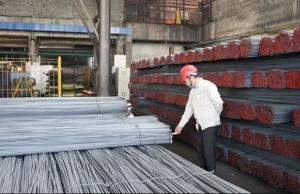 | Vietnamese steel products certified to meet greenhouse gas inventory standard BSI - the UK's leading international certification organisation - has just certified ISO 14064-1:2018 standard on greenhouse gas inventory for steel products of Hoa Phat Dung Quat Steel Joint Stock Company. |
 | Google greenhouse gas emissions grow as it powers AI Google, despite its goal of achieving net-zero emissions, is pumping out more greenhouse gas than before as it powers data centers needed to support artificial intelligence, the company said. |
What the stars mean:
★ Poor ★ ★ Promising ★★★ Good ★★★★ Very good ★★★★★ Exceptional
 Tag:
Tag:
Related Contents
Latest News
More News
- Main drivers for Vietnam’s digital economy future (December 03, 2025 | 11:35)
- Pivotal stage of growth paves way for rise in M&As (December 03, 2025 | 10:00)
- Positive projections for M&A interest from Thailand (December 03, 2025 | 09:40)
- Manifesting the first line of defence in cybersecurity (December 03, 2025 | 09:00)
- The transformational role AI can play in accounting arena (December 03, 2025 | 08:00)
- Unlocking 5G-AI potential in Singapore (December 03, 2025 | 08:00)
- Data-driven strategies vital for a fast-evolving nation (December 02, 2025 | 09:41)
- Policy to practice: how Vietnam can lead the region (November 26, 2025 | 16:03)
- Mobilising private capital at scale vital for climate battle (November 26, 2025 | 15:36)
- VILAF and Yoon & Yang launch Vietnam - Korea Practice Unit (November 26, 2025 | 15:16)






















 Mobile Version
Mobile Version